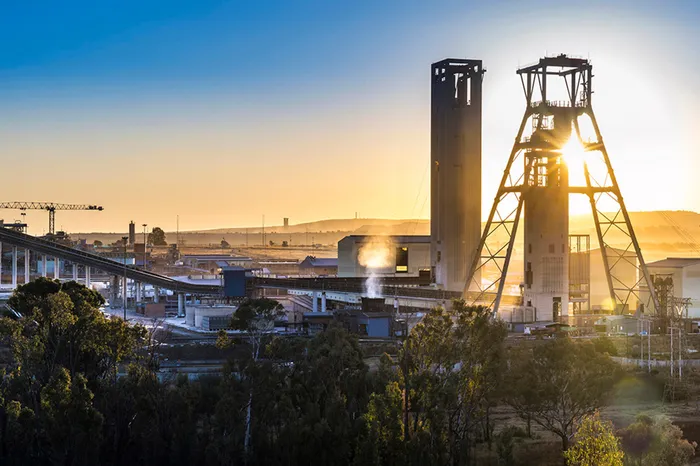South African mining finds resilience amid volatility, eyes green transition - PwC report
MINING

Gold was the standout performer, hitting record highs as investors turned to safe-haven assets amid geopolitical tensions and inflation concerns. Despite flat output and deep-level mining challenges, higher prices bolstered miners’ financial performance.
Image: Supplied
The South African mining industry has entered a new phase of resilience and reinvention, according to PwC’s SA Mine 2025 report, which highlights a sector balancing short-term headwinds with long-term transformation.
The report shows that mining’s contribution to GDP held steady at around 6%, even as the sector grappled with rising costs, infrastructure bottlenecks, and policy uncertainty. Market capitalisation climbed by 8% to R1.3 trillion, driven largely by strong performances in gold and platinum group metals (PGMs).
Gold was the standout performer, hitting record highs as investors turned to safe-haven assets amid geopolitical tensions and inflation concerns. Despite flat output and deep-level mining challenges, higher prices bolstered miners’ financial performance.
PGMs also staged a comeback after a tough start to the year. Platinum prices surged above $1 600/oz, while palladium and rhodium showed renewed strength. Cost cuts and shaft closures tightened global supply, positioning local producers for recovery.
Coal remained the workhorse of domestic power generation, with output projected to increase 3% to 247 million tons in 2025. Export potential was hampered by Transnet’s rail constraints, though private-sector participation in logistics is starting to gather pace.
At the same time, “green metals” — including copper, manganese, lithium, nickel, and vanadium —continued their upward trajectory, gaining strategic importance as global demand for clean energy technologies accelerated. The government’s new Critical Minerals Strategy aims to unlock value in these resources through faster permitting, skills development, and local beneficiation.
Illegal mining continues to pose a major challenge, with estimated losses ballooning to R60 billion in 2025 — up from R7bn in 2017. Illegal mining intensified in scale and complexity, expanding beyond gold and diamonds to affect nearly all commodities.
The government responded with four dedicated work streams, with law enforcement efforts receiving the most public attention. Operation Vala Umgodi, launched in 2023, has led to over 20 000 arrests, while mining companies have stepped up security and technology-based surveillance to combat theft and underground incursions.
“The issue now involves billions of rands and requires coordinated, cross-border action that addresses both economic and social dimensions” said Andries Rossouw, PwC’s Africa Energy, Utilities and Resources Leader.
Mining companies have pledged over 3 500MW of renewable energy capacity since 2022, but only 1 820MW has been installed so far. Transmission constraints and falling commodity prices have slowed progress, though Eskom’s R112.5bn Transmission Development Plan aims to expand grid capacity by 2034.
However, most renewable energy projects remain behind schedule, hindered by financial, technical and regulatory challenges.
“Many completed projects are still small relative to operational demand, reinforcing the sector’s continued reliance on Eskom for stable energy supply,” said Vuyiswa Khutlang, SA Mine project leader.
The draft Mineral Resources Development Bill proposes major changes to streamline licensing, formalise artisanal mining, and improve regulatory efficiency. It also removes petroleum oversight from the mining framework, reducing red tape and aligning with the new petroleum legislation.
Mergers and acquisitions activity has slowed but become more strategic. Gold and battery metals dominate the deal landscape, with companies like Harmony, Gold Fields, and Exxaro repositioning portfolios for future-facing minerals.
Laetitia le Roux, PwC’s South Africa energy, utilities and resource tax leader, concluded that 2025 marked a “strategic recalibration” for the sector.
Le Roux said the sector’s ability to adapt—through innovation, collaboration and disciplined execution—will be critical as it navigates ongoing volatility and positions itself for long-term, sustainable growth.
BUSINESS REPORT